RED DEER (CANADA)
Toronto Star [Toronto, Canada]
June 1, 2021
By Alex Boyd, Omar Mosleh, and Alex McKeen
It was a spring day in 1883 when John A. Macdonald, Canada’s first prime minister now comfortably into his second stint in office, explained why it was so important that Indigenous children be separated from their parents, forcibly if need be.
“When the school is on the reserve, the child lives with its parents, who are savages. … He is simply a savage who can read and write,” he said, as quoted in the record of debates in the House of Commons.
“Indian children should be withdrawn as much as possible from the parental influence, and the only way to do that would be to put them in central training industrial schools, where they will acquire the habits and modes of thought of white men.”
So went the cruel racism that would set in motion decades of physical and sexual abuse at what are now known as residential schools.
A network of more than 130 institutions would eventually spread across the country. The last shut its doors in the mid-1990s.
The effects of multiple generations of weakened family ties and severed cultural linkages are still being felt more than a century later — an anguish raked anew by last week’s discovery of an unmarked mass grave in Kamloops, B.C.
Survivors, meanwhile, say Canada’s reckoning with the children it buried is just beginning.
“If you think there’s another Kamloops just coming around the corner, there is one — trust me,” says Lyle Keewatin Richards, the child of a residential school survivor who is part of a group trying to preserve an unmarked cemetery near the former Red Deer Industrial School in Alberta.
According to the Truth and Reconciliation Commission, approximately 150,000 First Nations, Inuit and Métis children attended these residential schools. Estimates vary, but the commission put it at just over 4,000 dead, which would mean that more than one in 50 children who went to the schools died there. Most experts say the toll is likely higher.
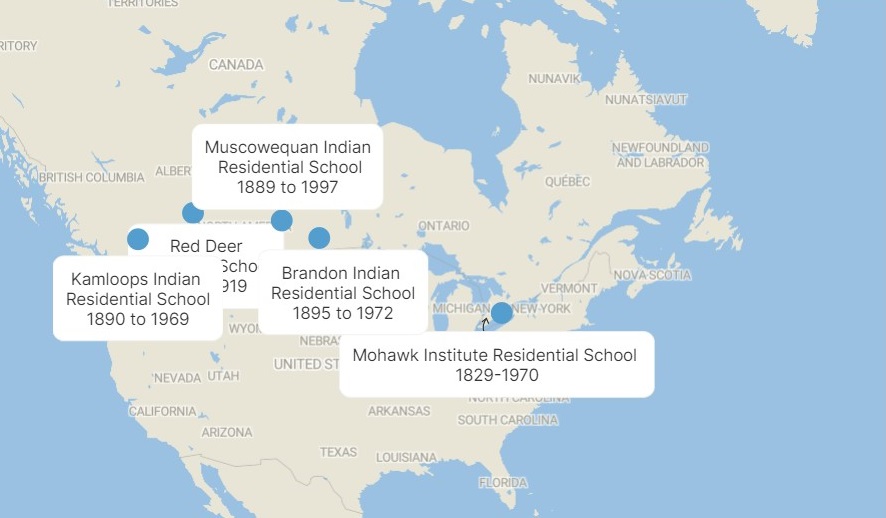
It was a rate of death driven by far higher levels of malnutrition, disease and abuse than the norm at the time in white schools, experts say.
Many school officials refused to send bodies back, claiming it was too expensive. Many children were buried in mass graves that weren’t marked.
“A lot of the survivors have been saying that there were a lot of deaths, a lot of burials and a lot of unmarked graves, not only in Kamloops, but in all the residential schools. The sad part is, nobody believed them,” said National Chief Perry Bellegarde of the Assembly of First Nations on Monday.
“Now here’s your concrete, tragic, horrific evidence of 215 bodies that have been found.”
Bellegarde told media he’s been getting texts and calls from survivors, chiefs and other community members asking if what was done in Kamloops can be done elsewhere.
Such efforts are currently hampered by resources, a lack of political will and, in some cases, private land owners now reluctant to have their property searched.
Bellegarde is calling on the federal government to work with the provinces and First Nations to do the research and find the rest of the unmarked graves.
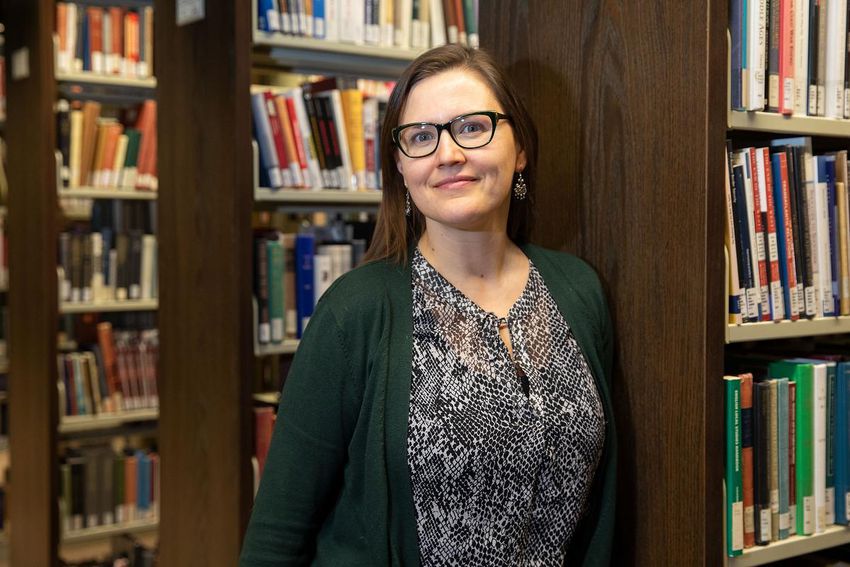
One of the people who has already done some of this work is Kisha Supernant, director of the Institute of Prairie and Indigenous Archaeology at the University of Alberta. She and her team have used ground-penetrating radar, drones and other techniques — including sending electric currents through the ground — to search for burial sites.
It’s time-consuming work. Even a small site takes days.
If an effort to find these graves goes ahead, she said, the first step will be for communities to decide for themselves whether they’d like to participate and what they would like the outcome to be — a process which Supernant notes will be complicated by the fact that some schools drew students from multiple First Nations. For example, communities might choose to repatriate the bodies, build a memorial, or identify each child while leaving them in place.
Given the stories of death and abuse from survivors, Supernant, who is Métis, believes the current death records are likely a “significant” underestimation.
“The truth is, we’re never going to find all the children, I don’t think,” she said. “But I certainly am committed to using my expertise and my knowledge, when communities want, to find as many as we can.”
Late Monday, the Alberta government announced it would fund research into the undocumented deaths and burials of Indigenous children and that the exact dollar amount would come in the next few days.
Here are just a few of the sites where more unmarked graves of Indigenous children who never came home are believed to lie.
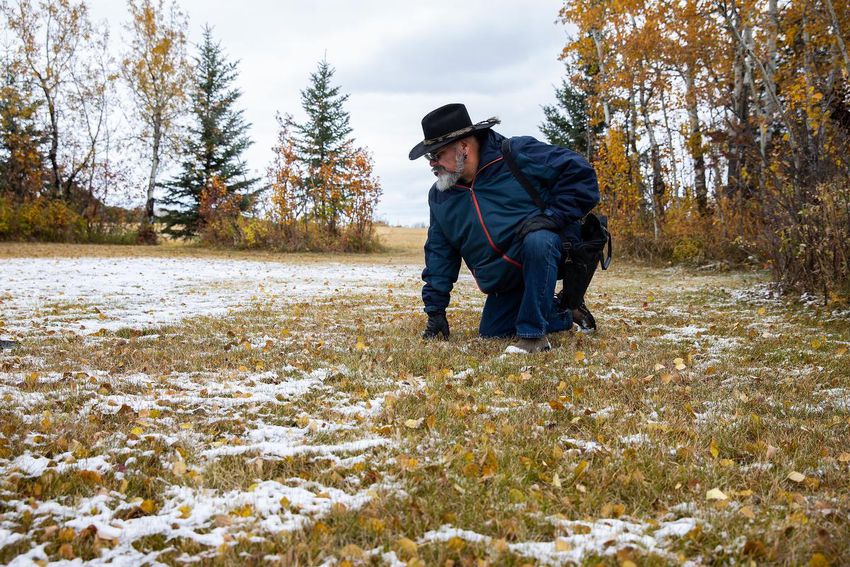
Red Deer Industrial School, Red Deer, Alta.
The imposing brick building in central Alberta differed from the standard residential school model in that it emphasized manual labour, such as farming and household duties, over academic learning and religious prayer. Industrial schools of this kind were also located farther from reserves.
But the harrowing tales of rampant abuse were comparable, as were reports of neglect, malnutrition and poor sanitation, which led to high mortality rates in many of the schools.
In 1907, then chief medical officer for Indian Affairs, Peter Bryce, estimated that about 40 per cent of the children who attended the school died as a result of their time there.
The current unmarked cemetery, currently only hinted at by two pairs of red and white prayer flags and small depressions in the ground, which are believed to indicate graves, is located on a small plot of private land next to an abutment overlooking the Sylvan Creek in Red Deer.
Lyle Keewatin Richards says hearing of the discovery of the remains of 215 children at the former Kamloops residential school was like reopening an old wound.
Richards has been working for more than three decades as one of the founding members of the Remembering the Children Society to preserve the Red Deer unmarked cemetery, where it is believed the remains of 50 to 70 children who attended the school between 1893 and 1918 are located.
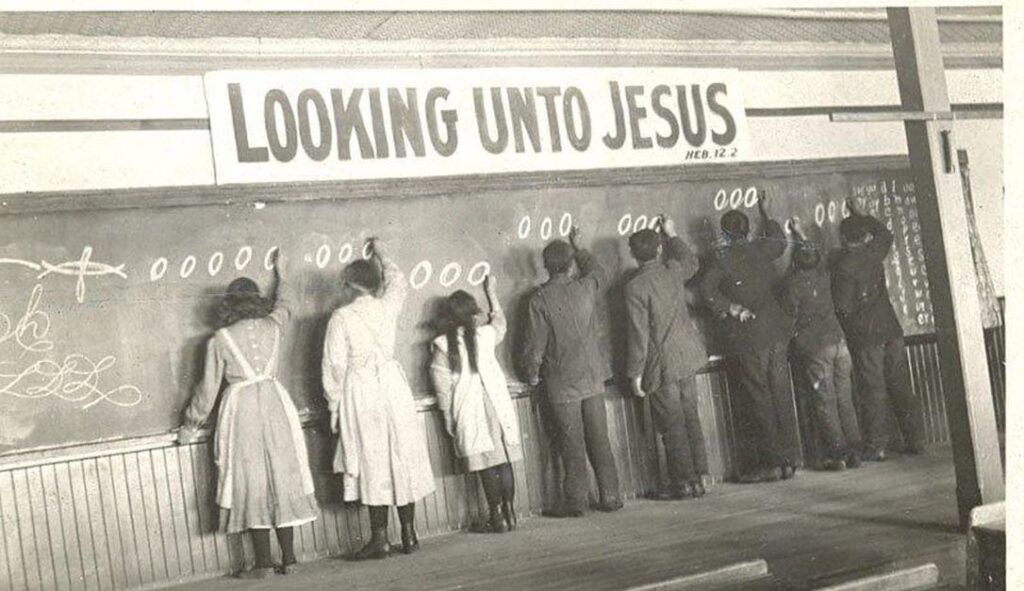
He said more research is needed to know for sure.
In 2017, the society unveiled a memorial stone at the current Red Deer city cemetery to commemorate four children who attended the school and were now buried there after they died at the school in 1918 from the Spanish flu epidemic: Jane Baptiste, 13; Georgina House, 14; David Lightning, 14; and Sarah Soosay, 13.
They have been working for years to create something similar at the current unmarked cemetery and have made significant progress.
Richards said the Alberta government has purchased the land and is negotiating an easement with the owner, so the public can access it. He said the government has also expressed willingness to help with the radar work.
Richards, the child of a residential school survivor, said he hopes to see similar partnerships and work underway to recognize unmarked cemeteries and honour the children who have been lost, as well as the communities that lost them.
“Go to all of the schools and do the surveys and find everything you can, because then we can do the ceremonies and then we can do what needs to be done for these children,” Richards said. “And then I think the most important thing is it allows us to walk away from the graves. We need to walk away from these graves and heal.”
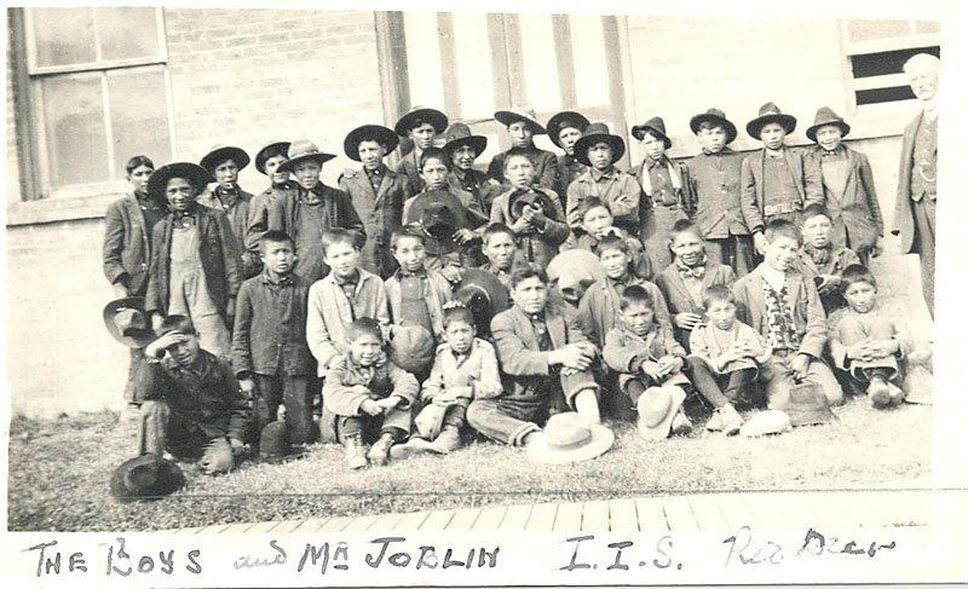
Muscowequan Indian Residential School, Saskatchewan
The dilapidated brick building on the Muskowekwan First Nation is one of the few schools still standing that hasn’t been repurposed.
The Muskowekwan have embarked on a project to preserve its history, and band Coun. Cynthia Desjarlais told the Star in 2019 that the community hopes to identify and commemorate burial sites and turn the old school into an archive or museum about the residential school system.
In 1993, construction workers digging trenches on the property accidentally unearthed human remains, which alarmed the community. The trench was covered up and the disturbed remains were moved to a nearby hill.
According to documents from the National Centre for Truth and Reconciliation, 19 graves were uncovered on the school site between 1992 and 1993 during the course of contract work to install a new sewage line.
While Supernant’s team has used ground penetrating radar to identify some of the graves, the work is not complete.
“They should have been marked long ago and never were,” Desjarlais previously told the Star. “That’s where our community feels really bad.”
The Mohawk Institute Residential School, Brantford, Ont.
This was one of the oldest residential schools in Canada. It opened in 1829 and was operated by the Anglican Church before being taken over by the federal government in 1885.
History of escapes from the school are well-documented, as are stories of physical and sexual abuse, and of malnutrition. The latter complaint earned the school the nickname “the Mush Hole.”
Bob Comandant, a Mohawk nation member in Wahta, northwest of Gravenhurst in Ontario, said the news of the 215 children may energize efforts to find more children across Canada. He wants the grounds of the Mohawk school searched.
His grandmother, uncles and aunts, were survivors of the institute in Brantford. Comandant’s mother told him horrific stories of sexual abuse at the school, and of his uncle’s multiple efforts to run away.
He wants the grounds of the Mohawk school searched, but he said that all former residential schools should get the same treatment.
“The accountability needs to be on the current leaders, because they represent the country that sanctioned (this system),” he said. “If Canada put half as much effort into finding these graves as they do to pushing this pipeline through, we’d find them all.”
He said he believes graves may be present at every former residential school across the country, and that every one should be searched.
“I want all of them found. The parents, the families, they need that closure, that knowing that they were found,” he said. “In all honesty here, if it was 300 white kids, the country would be up in arms.”
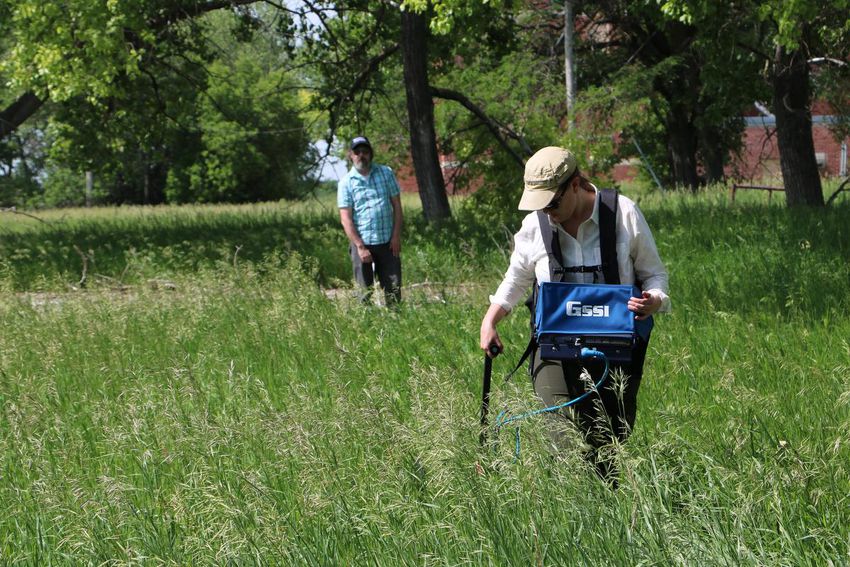
Brandon, Man.
In the rural municipality of Cornwallis in southern Manitoba, roughly five kilometres northwest of Brandon by the north bank of the Assiniboine River is a privately owned campground known as Turtle Crossing. Inside, there was once a small-fenced area and a monument that said “Indian Children Burial Ground.”
It has since been removed by the landowner, according to former Sioux Valley Dakota Nation Chief Vincent Tacan, whose mother attended the school.
The Assiniboine River Burial Grounds, as it is known, is believed to be one of two cemeteries where the remains of former students of the Brandon Indian Residential School are located. There are currently no gravestones or markers there.
Tacan said that provincial authorities have no policies or jurisdiction to address unmarked graves of Indigenous children on private land.
Katherine Nichols, a graduate student at the University of Manitoba, wrote in her 2015 thesis that it’s believed the Assiniboine River Burial Grounds was the school’s first burial ground and operated between 1895 and 1912. The school was first run by the Methodist Church and then the United Church and drew students from an area encompassing central Saskatchewan to southwestern Ontario.
In Brandon’s city limits, north of the former school site, the Brandon Municipal Cemetery includes a cairn listing 11 students of the former school and the dates of their death. But there had long been rumours that depressions in the ground indicated there were more, undocumented deaths.
Through archival research, mapping, area photography and soil probing, Nichols verified the existence of both marked and unmarked child and infant graves at the Brandon Municipal Cemetery. Between the two sites, it is believed about 70 students who died while attending the school are unaccounted for and buried in unmarked graves.
Tacan worked with Nichols, landowners and other levels of government to try and determine the truth about how many children’s remains may reside on the site before he stopped serving as chief of Sioux Valley Dakota Nation in 2018. He said efforts to establish a memorial or monument of some sort have been difficult because the property hasn’t been kept intact and is split into different sections with different landowners.
Over the years, the site has suffered due to neglect, he said. Tacan wants to see a memorial as well as a healing lodge built on the site to help community members deal with the impacts of intergenerational trauma caused by the residential schools system.
“We need to make it easier for Indigenous people to have access to some of these sites. I know some of these residential schools are now under … ownership of private individuals. … I think we need to look at giving First Nations the options of, perhaps, assisting them in acquiring some of these properties, so they can build the memorials or healing centres like we wanted. So people can get past this.”
If you or someone you know needs someone to talk to, you can contact the Indian Residential School Survivors Society for counselling support available at 1-800-721-0066, or a national 24/7 Crisis Line at 1-866-925-4419.
